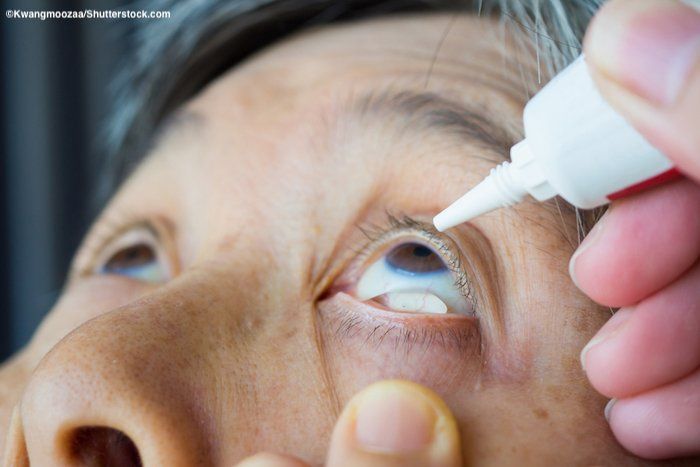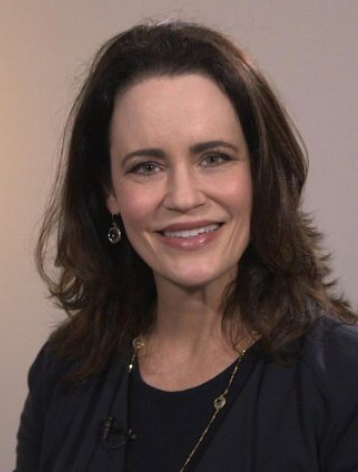Article
Sharpen your medical mind. Be a dry eye sleuth.
Author(s):
Laura M. Periman, MD, shares why dry eye spurs her curiosity, and why being a “dry eye sleuth” is refreshing (yes, refreshing!) in today’s medical practice environment.

Editor’s Note: Welcome to “Let's Chat,” a blog series featuring contributions from members of the ophthalmic community. These blogs are an opportunity for ophthalmic bloggers to engage with readers with about a topic that is top of mind, whether it is practice management, experiences with patients, the industry, medicine in general, or healthcare reform. The views expressed in these blogs are those of their respective contributors and do not represent the views of Ophthalmology Times or UBM Medica.
Watching the fishmongers at Seattle’s Pike Place Market, I’m fascinated by the exuberance and skill they show for catching a huge salmon flying through the air. As an educator, I sometimes think of the fishmongers’ skill when I help colleagues firmly grip the slippery fish that is dry eye.
Educational weekends with plenty of hands-on modules help break down the barriers to clinical implementation of dry eye knowledge, but the pace and quantity of content can make attendees feel like I’m throwing them a great many fish, one after the other. They can feel overwhelmed. This is completely understandable, given the seemingly exponential growth in the number of technologies and therapeutics available for our dry eye patients.
I want my colleagues to see that there is an easy antidote to feeling overwhelmed. The key is to maintain a sense of clinical and intellectual curiosity. I’d like to share why dry eye spurs my curiosity, and why I think being a “dry eye sleuth” is refreshing (yes, refreshing) in today’s medical practice environment.
Feed Your Curiosity
“This patient is crazy.” It’s a common reaction to dry eye patients among our colleagues and staffs, usually in response to the perception of high patient needs.
Why take on that emotionally frustrated patient, in the midst of our other demands from administrators and insurance companies, as well as productivity pressures? It should be done exactly because dry eye is outside the grind. It’s not about rote repetition and ever-faster turnover. It’s about using your doctor’s mind independently-in exactly the way that made you become a physician in the first place.
If you approach the dry eye patient with curiosity, you start to appreciate that not only is there a great deal more than simple loss of homeostasis and inflammation going on, but there are also wonderfully complex neurologic processes.1 Chronic diseases have impacts on psychological well being, quality of life, social lives and productivity.2
Once doctors and staff understand these impacts, it’s easier to see that the “crazy” patient is actually not crazy at all. Rather, the patient is suffering and needs our help. My staff and I want those beleaguered patients who have been doctor-shopping for relief to finally feel they have come to the right place.
Diagnosing and treating dry eye is complex but achievable (and billable) within a timeframe that fits our practices. When you improve or restore the well being and ocular health in that “crazy” patient by ending vision fluctuation, inflammation, and discomfort, your heart will skip a beat.
How to get started
You don’t need to have a lot of extra time or expensive equipment to help people with dry eye-or even to start a dry eye center of excellence. Just tap into your creative, curious brain and stores of medical knowledge. Enjoy the sense of discovery and intellectual satisfaction of exploring these areas as a dry eye sleuth:
- How medications work
A good dry eye sleuth needs a complete picture of how our ocular therapeutics work and how to objectively track response to therapy. Great clues are often seen in systemic and topical medication lists as well. Who are the best candidates for cyclosporine (Restasis, Allergan), lifitegrast (Xiidra, Shire), or the new therapeutics on the horizon? Could your patient’s allergy, depression or hypertension medications be influencing the ocular surface? It’s time to leverage your second-year medical school pharmacology classes!
- How to evaluate devices
There is a proliferation of dry eye technologies for both diagnosis and treatment. Some are very important in my own practice. For diagnostics, I rely heavily on fluorescein and lissamine green staining, tear osmolarity testing (TearLab Osmolarity Test, TearLab), MMP-9 inflammatory burden testing (InflammaDry, Quidel), and imaging with photography and meibography (LipiScan, Johnson & Johnson Vision). My treatment devices include intense pulsed light (IPL) therapy (M22 OPT, Lumenis) and thermal pulsation therapy (LipiFlow, Johnson & Johnson Vision). I’m looking forward to trying two new thermal modalities (ThermiEyes, Thermi; iLux, Tear Film Innovations; TearCare, Sight Sciences) and exploring the clinical synergies. Exploring the science of new technologies with curiosity and enthusiasm is another sleuthing effort I enjoy.
- How patients experience disease
When we remove a cataract and implant an IOL, the patient sees better and leaves our practices very quickly. When ophthalmologists treat chronic disease, we have the opportunity to bond with patients and interact with them throughout many chapters of their lives. We’re with them on a journey, with many enjoyable office visits along the way. As soon as we shift our mindset from fast fixes to the ever-improving world of long-term dry eye control, we win and so do our patients. And our feel-good window of professional satisfaction gets much wider.
Case: Sleuthing through pre-operative dry eye
Getting patients tuned up for cataract surgery is a rewarding aspect of dry eye management, but sometimes the complex patient can present a bigger puzzle to solve.
For preoperative cataract patients with significant ocular surface disease, it is not uncommon for the technicians to notice variable keratometry readings. Careful history often uncovers a high symptom constellation of fluctuations in vision, glare, eye redness, and ocular fatigue as well as medications that exacerbate ocular surface disease.
Testing often reveals high tear osmolarity and strongly positive MMP-9 results. Examination may show significant corneal staining, abnormal tear breakup time and significant meibomian gland dysfunction (MGD). The presence of telangiectasias of the lid margin with conjunctival inflammation suggests a chronic inflammatory component such as ocular rosacea, a co-morbid contributor to dry eye disease.
By applying our sleuthing skills to a careful history and finding all the exacerbators of dry eye disease, we can treat all aspects of the disease and, in fact, the whole patient. We can suggest dietary changes and DHA/EPA/GLA omegas and prescribe a topical immunomodulator and immune-antagonist such as lifitegrast.
In addition, we can address MGD with thermal pulsation therapy and add local-regional therapies for local-regional comorbidities such as IPL for rosacea.
With treatment, signs and symptoms of dry eye will improve significantly. After we optimize the surface, we proceed with successful cataract surgery.
But dry eye isn’t just something we need to get out of the way for cataract surgery. It affects patients’ lives very deeply, every day.
Get involved with the medicine and therapies that can improve their quality of life. Patients don’t need yet another artificial tear; they need an intellectually curious problem-solver, a systems optimizer, a dry eye sleuth. It could be you.
Disclosures:

Laura M. Periman, MD, is Ocular Surface Disease Expert and Director of Dry Eye Services and Clinical Research at Evergreen Eye Center in Seattle, WA. She discloses relationship with Allergan, Bruder, BioTissue, Eyedetec, Lumenis, Science Based Health, Shire, Sun, TearLab and Visant. Follow her on Twitter at @DryEyeMaster.
References:
1. Belmonte C, Nichols JJ, Cox SM, et al. TFOS DEWS II pain and sensation report. Ocul Surf. 2017;15:404-437.
2. Rothrock NE, Hays RD, Spritzer K, Yount SE, Riley W, Cella D. Relative to the general US population, chronic diseases are associated with poorer health-related quality of life as measured by the Patient-Reported Outcomes Measurement Information System (PROMIS). J Clin Epidemiol. 2010;63:1195-204.
Newsletter
Don’t miss out—get Ophthalmology Times updates on the latest clinical advancements and expert interviews, straight to your inbox.
2 Commerce Drive
Cranbury, NJ 08512
All rights reserved.




